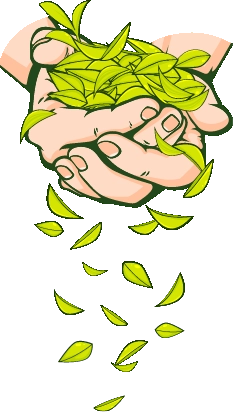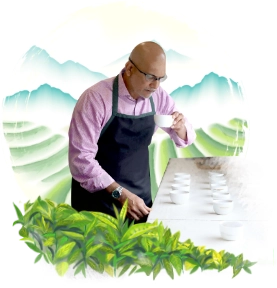It’s Not All Black And White! The Colourful Word Of Teas You Didn’t Know
There is an entire world of tea that exists between Black and White! You would have definitely heard of, and we are sure, tried, a cup of Green Tea or an Oolong Tea. While these are the traditional teas that have been enjoyed by tea lovers the world over, there is a surprising and exciting world of tea that exists and spans almost every color of the rainbow!
Here are some lesser known teas but quite interesting teas for you to try!
Yellow Tea
Among the rarest and most expensive teas in the world, the mythical and mystical Yellow Tea or Huang Cha is a Chinese tea. Grown from the same plants, Camellia Sinensis Sinensis, from which all natural tea – Black, Green, Oolong and White Tea is comes – it is the unique processing of the green tea leaf that makes Yellow Tea.
The process of making of Yellow Tea is similar to making Green Tea, except that it involves an additional process known as Sealing Yellow.
After lightly steaming the freshly plucked leaves to kill the enzymes, these leaves are then encased or covered in paper or cloth or even bamboo baskets. They are kept encased for a few hours a day, causing slight fermentation. This process is again repeated once, sometimes twice, till the optimal level of fermentation has occurred. They are then dried, first at low temperature and then, at a slightly higher temperature. This causes the green tea leaves to lose their grassy and vegetal notes. The resultant tea is a sweet, mellow, golden yellow cup. to They are kept in then covering them and allowing them to oxidize and ferment slightly over a period of time. The amount of time the leaves are covered or heaped, as it is also called, is determined by the type of Yellow Tea being processed.
Making Yellow Tea is is a fast vanishing art that is today practised only in a few estates in China by old tea masters with years and years of expertise.
Purple Tea
Purple Tea is a 100% natural and non-GM tea that is an outcome of a unique genetic mutation in the tea plant, Camellia Sinensis Assamica. It was first observed in the state of Assam in India, producer of some of the top black teas in the world. The unique genetic mutation results in the production of anthocyanin which gives the tea leaves a purple colour. Anthocyanin is a powerful oxidant that is also found abundantly in blueberries, blackberries, black currants and black plums. In fact, Purple Tea is said to have a higher proportion of anthocyanin than blueberries.
After it was discovered in Assam in the 1980s, this rare varietal was gifted to the Tea Research Foundation of Kenya (TRFK) as it was thought that the variety would thrive in the higher elevations in Kenya. After many years, Purple Tea seeds were distributed for planting on a commercial basis as recently as 2011.
Today, Purple Teas are carefully grown at higher elevations of 4,500 ft. to 7,500 ft. on Mount Kenya. Due to higher elevation, the plant produces more anthocyanin and polyphenols. This is why increasing research is showing that Purple Tea has more health beneficial properties than even Green Teas.
Purple Tea is also said to the only natural tea that changes its colour! When lemon juice is squeezed in the amber liquor, it reacts with the antioxidants and changes to a pinkish/purplish colour.
Red Tea
Red tea, or more specifically, red-bush tea, is an infusion prepared from the leaves of a Rooibos plant that is native to South Africa. Although not tea in the strict sense (only leaves from Camellia Sinensis are true teas), Rooibos Tea is a technically a tisane or a herbal infusion. The Rooibos leaves are green and needle-like, and are oxidized just like tea. It is after oxidation that the leaves get their signature red colour.
When brewed, Rooibos Tea has a deep red liquor with a sweet, earthy taste. Compared to Black Tea, Rooibos has significantly higher levels of anti-oxidants and much lower tannins. It is also naturally caffeine-free.
Blue Tea
Again, though not a true tea, Blue Tea is an herbal infusion. It is made with dried flowers of the butterfly pea plant. Butterfly pea plant has one of the most vibrant and vivid naturally occurring blue colour. It is used as a natural dye and colouring for its brilliant blue. As an infusion, it can be enjoyed both hot and cold. The caffeine-free, natural infusion has a light floral taste with subtle notes of earthiness.
Violet Tea
Another natural tisane made from the petal of violet flowers, this extremely fragrant and floral infusion is made from either fresh or dried violet flowers.
Today, natural teas are blended with different herbs, flowers and spices to give you an array of teas of every hue and colour. No longer is the world of tea limited to just Black Tea or White Tea, but there is a tea for every colour of rainbow.

Tea is a religion in the art of life.

